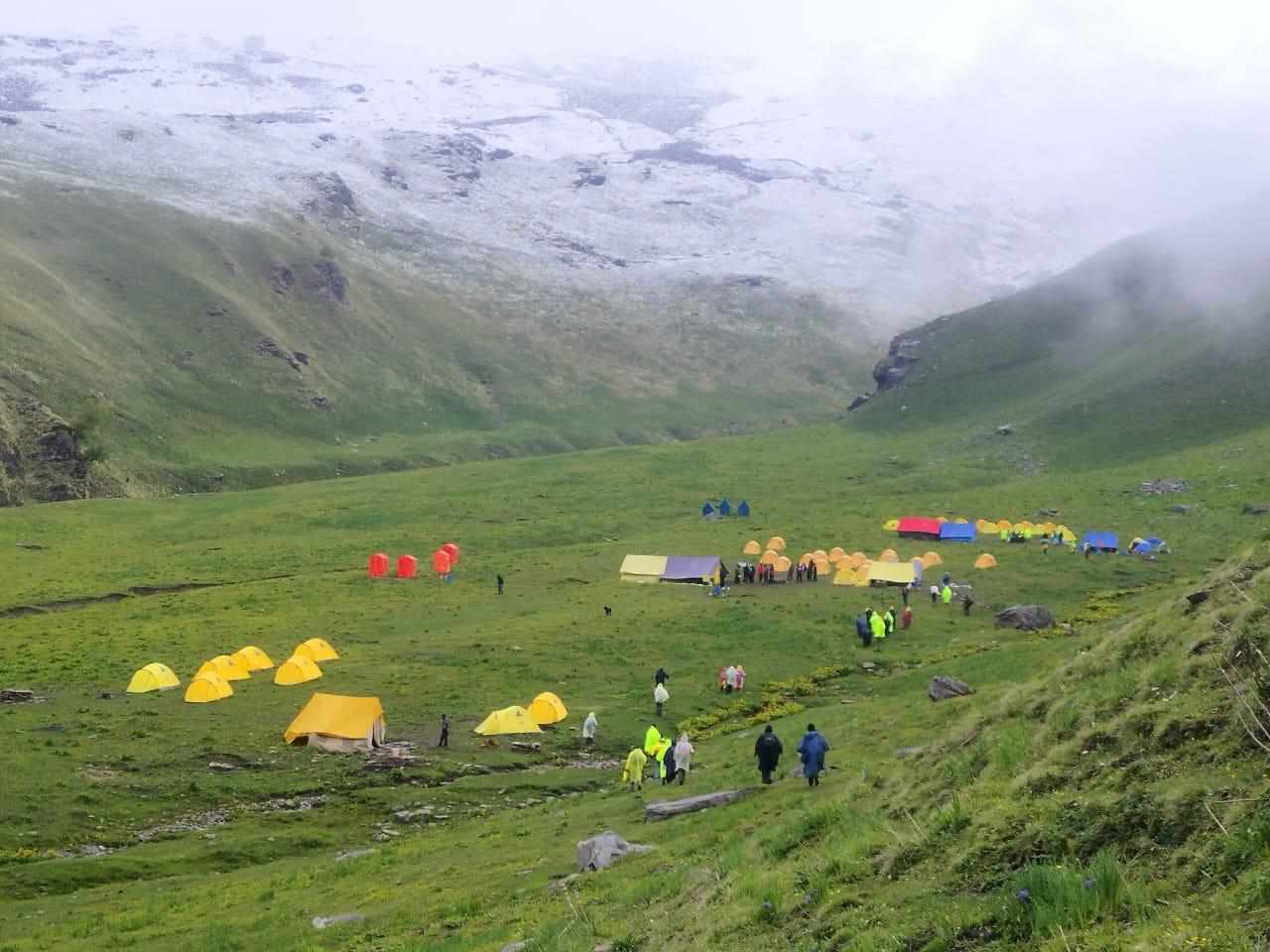
Introduction
Tucked away in the beautiful state of Himachal Pradesh, the Buran Ghati Trek is one of India’s most scenic and adventure-packed high-altitude treks. It offers a unique blend of thick forests, alpine meadows, ancient villages, snow walls, and glacier descents—all in one trail. However, like any Himalayan trek, timing is everything. Knowing the best time to do the Buran Ghati Trek can make the difference between an awe-inspiring experience and a risky, weather-struck disappointment.
In this detailed month-by-month guide, we break down the ideal seasons to embark on this journey and what to expect in each.
Overview of the Buran Ghati Trek
Altitude: ~15,000 ft
Duration: 7–9 days
Difficulty: Moderate to Difficult
Region: Shimla District, Himachal Pradesh
Key Highlights: Dayara meadows, Chandranahan Lake, snow walls, Barua village descent
Month-by-Month Breakdown: When to Go and Why
January to March – Winter Wonderland (Not Recommended)
Trail Status: Closed due to heavy snow
Conditions: Sub-zero temperatures, snow-covered trails, high avalanche risk
Why Avoid: Most of the trail remains under deep snow. The pass is completely inaccessible, and even the base camps are hard to reach.
Verdict: Not suitable for trekking.
April – Melting Snow & Risky Terrain
Trail Status: Partially open
Conditions: Snow begins to melt; slippery trails, unpredictable weather
What to Expect: While lower camps may be accessible, the upper reaches including the Buran Pass are still buried in snow and pose risks. Navigation is difficult without professional guides.
Verdict: Avoid unless you're with an experienced trekking group equipped for snow travel.
May – Season Begins
Trail Status: Opening up
Conditions: Snow still present in higher camps, but manageable
What to Expect: The trek starts becoming accessible. Meadows start turning green, while higher camps offer the thrill of walking through snow. This is a popular month for adventure lovers seeking snow experiences.
Verdict: Great month for those who want snow and clear skies.
June – Peak Season
Trail Status: Fully open
Conditions: Clear trails, manageable snow at the pass, stable weather
What to Expect: The best time for the Buran Ghati Trek. Meadows are in full bloom, rivers flow vibrantly, and snow walls are still intact near the pass, offering the iconic rappel descent. Nights are chilly but manageable.
Verdict: Highly recommended — balanced between beauty and accessibility.
July – Beginning of Monsoon
Trail Status: Open but tricky
Conditions: Frequent rain, slippery trails, cloudy skies
What to Expect: The trek becomes challenging due to rain. Though the greenery is at its peak, trail conditions may deteriorate with mudslides and leeches in forest sections.
Verdict: Trek only if you’re prepared for wet conditions and have proper rain gear.
August – Monsoon Peak (Not Ideal)
Trail Status: Risky
Conditions: Heavy rainfall, landslides, obscured views
What to Expect: Landslide-prone areas like Rohru and Janglik can make travel dangerous. Views are mostly covered, and consistent rainfall makes camping difficult.
Verdict: Best to avoid for safety reasons.
September – Post-Monsoon Beauty
Trail Status: Open and stable
Conditions: Crisp air, green landscapes, minimal rain
What to Expect: This is a close second to June in terms of ideal trekking conditions. The trails are dry, skies are clearer, and there’s a fresh post-monsoon glow in the meadows and forests.
Verdict: Excellent choice for those who want lush beauty without snow.
October – Autumn Glory
Trail Status: Open till mid-October
Conditions: Cool days, colder nights, golden-brown landscapes
What to Expect: Trees start to turn golden, and the temperature begins to drop, especially at night. Some patches of early snow might appear at higher camps.
Verdict: Good for those who prefer fewer crowds and crisp, clear weather.
November – Closing Season
Trail Status: Starts closing down
Conditions: Cold, occasional snowfall
What to Expect: The trail becomes risky as snow begins to settle again at higher altitudes. Daylight hours shrink, and temperatures drop significantly.
Verdict: Not recommended unless you're a seasoned winter trekker with a support team.
December – Deep Winter (Not Recommended)
Trail Status: Closed
Conditions: Heavy snowfall, inaccessible passes, sub-zero nights
Why Avoid: Harsh winter conditions make trekking unsafe and logistically unviable.
Verdict: Off-limits for trekkers.
Summary: Best Months at a Glance
MonthTrekking FeasibilityHighlightsJanuary–March❌ ClosedDeep snow, inaccessible trailsApril⚠️ RiskyMelting snow, unstable terrainMay✅ GoodSnow + Spring blend, scenic beautyJune✅✅ BestBalanced terrain, snow wall rappelsJuly⚠️ CautionRain begins, muddy trailsAugust❌ AvoidPeak monsoon, landslide risksSeptember✅ ExcellentPost-monsoon freshness, clear skiesOctober✅ GoodAutumn colors, fewer trekkersNovember⚠️ RiskySnow returns, colder nightsDecember❌ ClosedInaccessible due to heavy snow
Conclusion
The Buran Ghati Trek is a true Himalayan treasure, but the success of your journey largely depends on when you choose to go. For snow lovers and adventure seekers, May and June are unbeatable. If you prefer rich greenery and stable weather, September is ideal. Always check local conditions, hire certified guides, and plan your trek through reputed agencies.
So, pick your month, lace up your boots, and get ready to experience the raw beauty of Buran Ghati!




















Write a comment ...